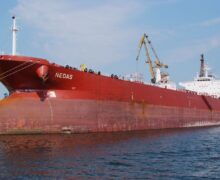
Seafarers’ Documents – F R Chowdhury (1st Batch)
I am writing this paper at a time when there is so much misunderstanding about certificates and documents that a seafarer is expected to have and carry. I hope this paper will make things clear with reasons and justifications.
Seafarers’ Identity Document: This is issued in Compliance with ILO Convention No. 185 on Seafarers’ Identity Documents Convention (Revised) 2003. This has replaced old identity document convention number 108 of 1958. This is supposed to be issued by the authority of seafarer’s state of nationality. It calls up on the member states to apply the same stringent measures as applied for issue of an international passport but does not call it as equivalent to or replacement of a passport.
Seaman’s Book or Seafarer’s Record Book (SRB) or Discharge Book or Continuous Discharge Certificate (CDC): They all relate to the same thing. It originates from ILO Convention No. 22 of 1926 on the subject of Article of Agreement that entered into force in 1928. Article 5 of that Convention requires every seafarer to be issued with such document that can show his/ her period of service with relevant capacity on a particular ship. It clearly forbids writing anything about his/ her ability, conduct or character. Apparently this document shows in a comprehensive manner services performed by the seafarer on different ships. It summarizes his/ her experience and is a useful reference for further employment. Some time it is also used to substantiate mandatory requirement of sea-service for taking higher grade of examination.
This book is also normally issued by the authority of the state the seafarer belongs to. However, if s/he serves on foreign flag ship, the Flag State may also issue this Book.
This document is by no means a travel document though sometime with other supporting documents it has been accepted for travel purpose in some parts of the world.
Seafarer’s Certificate of Medical Fitness: Issued under MLC-2006 and regulation I/9 of the STCW-78 Convention as amended. It is issued by medical practitioner approved by the Administration and is valid for two years from the date of issue. Certificate for Color Vision remains valid for six years.
Certificate of Competency: Officers including master shall have certificate of competency showing capacity and limitations with period of validity. If the COC is not issued by the Flag State then there shall be a recognition endorsement from the Flag State.
Ratings’ certificates: Ratings may have similar certificates (certificate of qualification or certificate of proficiency) for capacities identified in the STCW Convention. Ratings certificates do not require a recognition endorsement from Flag State.
Other supporting training documents: Officers and ratings obtain quite a number of ancillary training documents (different for different categories) in the process of obtaining the main certificate for the identified capacity. They remain with the seafarer concerned:
1.Basic (Safety) Training (BT); 2. Certificate of Proficiency in Survival Craft (CPSC); 3. Advanced Fire-fighting (AFF); 4. Medical First-Aid (MFA); 5. Security Familiarization (SF); 6. Proficiency in Medical Care (PMC); 7.Tanker Training – Basic/ Advanced – Oil/ Chemical/ Gas; 8. Training for service on Passenger Ships; 9. Radar – ARPA/ Bridge Resource Management (BRM) / ECDIS etc.
For the convenience of inspection by PSC, the certificates of various capacities and medical fitness may be left with master or Duty Officer. Otherwise seafarer is the custodian of all his/ her document. Any certificate/ document kept with the master must be returned to the seafarer when s/he is leaving the ship after being signed off.
Article of Agreement/ Crew Agreement: As stated earlier it is derived from ILO Convention No. 22. This remains on the ship (Not a document belonging to the seafarer) as an evidence that the relevant seafarer is genuinely employed on the ship.
International travel: International Passport (with Visa where so necessary) is the recognized travel document. Passport may not be necessary to serve on a ship but for the purpose of joining and repatriation, the seafarer may have to present passport and visa like any other air passenger.
Shore leave: Seafarers duly signed on the Article of Agreement, duly listed in the Crew List and being in possession of SID (ILO Convention-185) should be given normal shore leave during the vessel’s stay in port without the necessity of separate visa.
Courtesy: www.juldians.org
——————–
(The writer is in Tonga as a World Bank consultant for transport sector).<fazlu.chowdhury@btinternet.com>








![[নোঙর 2016] আমার সেরা বিদেশ ভ্রমন : নাফিসা মাশহুরা ইরা](http://bdmariners.org/wp-content/uploads/2016/06/Dubai-city-tour-70x70.jpg)




I am not a ship crew but as a Geophysicist I used to go offshore and stay in the vessel. As a Bangladeshi what I need to do and where I can get a seaman book?